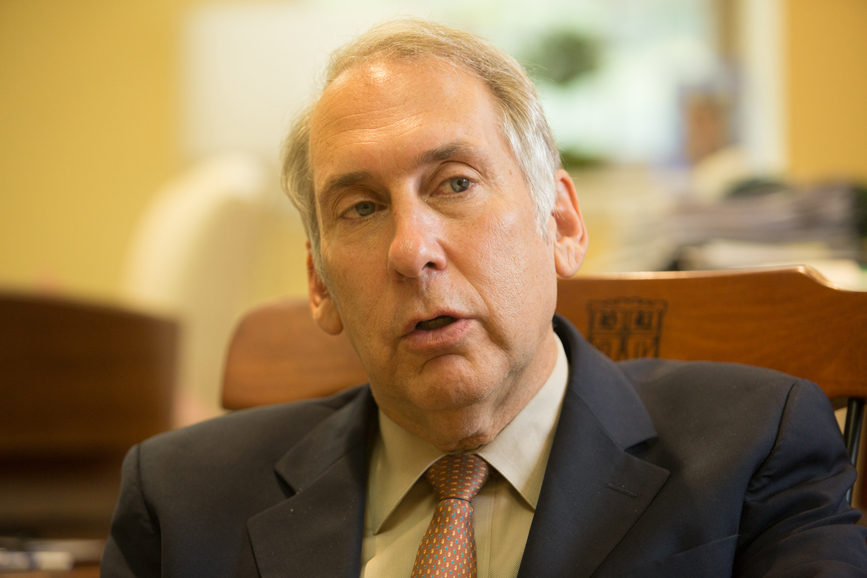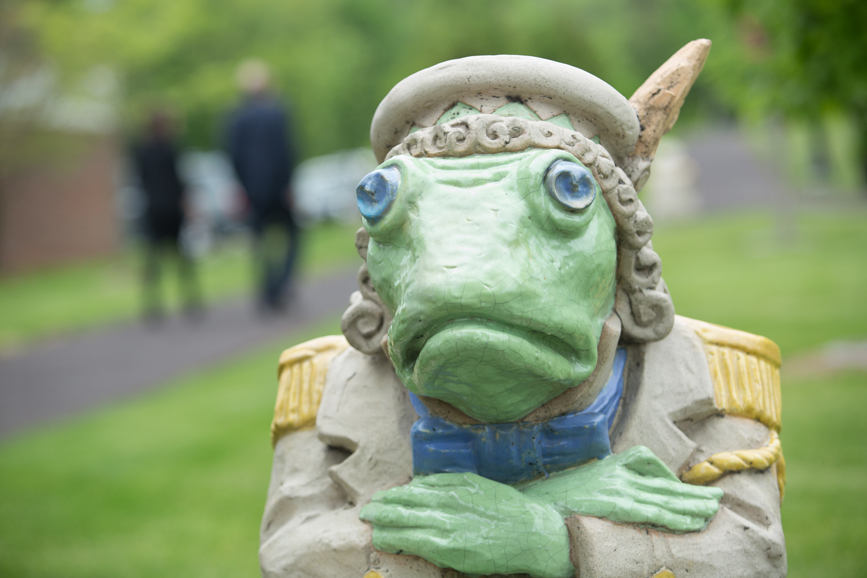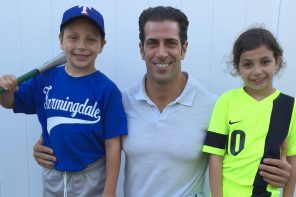At first, you might not think that Dr. Edward Halperin, chancellor of New York Medical College, would have much in common with Jacqueline Kennedy Onassis. But Halperin, a distinguished radiation oncologist, has done for the Valhalla-based college what Onassis did for the White House — recalled its treasures to life.
He uncovered paintings that now hang throughout the campus. He discovered and has displayed “Alice in Wonderland” — themed statues, hidden for years in various locations, which have added a sense of whimsy to the surroundings. One such discovery, the White Rabbit from Lewis Carroll’s 1865 children’s book “Alice’s Adventures in Wonderland,” stands over the front door of the Sunshine Cottage, now the administration building. Other character statues include the Fish Footman and the Frog Footman.
“When I came to work here in 2012, the rabbit was covered by a wooden box, and there were no statues, there were no pictures or autographs or anything that you see around here,” Halperin says amid his collection of medical instruments, displayed in his office. “My predecessors didn’t think much of all that stuff. I came to work one day in coveralls and I crawled around in the basement and… the attic, and I found about 50 paintings and the statues and started to have things restored and put back up on the walls. I wrote the descriptive captions… and we broke the box and liberated the bunny.”
Celebrating this discovery meant digging a little deeper for more information about the statues.
“We looked into the history of the (Sunshine) Cottage, and found a postcard collector who had pictures of the cottage in the 1930s to (help) reconstruct the images and figure out where the statues were.”
The Sunshine Cottage was originally a children’s tuberculosis sanitarium, only a short walk from the adult tuberculosis facility called The Munger Pavilion. Halperin’s guided tour of the campus leads WAG down into the tunnel connecting the two buildings, where he discovered the frog and fish statues that have brought us all together. When asked if he’d brought them right back up into the light of day, he says, “No… they were too heavy to lift.”
But once funds were secured to have them moved and restored, Halperin had the statues placed at what he calls the “crossroads of the campus,” tucked in between dorms and classrooms — where the students and faculty alike can see them every day.
For Halperin, this ties into the belief that a patient’s psyche is as important as his body in the treatment process. For a school dedicated to educating future doctors, such a message is simply and subtly reinforced with the presence of the statues, he says.
“My predecessors, who had them removed, I think missed the point. Why were they put there in 1931? What was the context of why they were there? They were there, because someone thought that you had to heal the patient’s spirit as well as their diseased lung from tuberculosis. That was an important lesson in 1931 and it’s an important lesson now.”
Medicine didn’t have the first claim on his affections. The law did. But, he says, “I decided that lawyers spent a lot of time dealing with trouble that people got themselves into and doctors dealt with more primal evil. So I told my parents I was going to go to medical school, not to law school.”
As for his decision to specialize in radiation oncology, he based it on the advice of an adviser during the course of his studies but found it to be a rewarding field of study and practice. Halperin says he simply wanted to do good and found that treating sick children was the best way for him to make a real difference.
Healing is a passion. But so is history. He blends the love of both in the required course he teaches for first-year students called “The History of Medicine,” in which they explore the past as a way of winning the future:
“Let me tell you what doctors did in the event of the yellow fever plague in Philadelphia in the 1790s. Let me tell you what doctors did in the face of the first discovery of AIDS in 1981. Then maybe you’ll know what to do when someone says there’s someone in this town with Zika virus. Will you run away? Or will you stand at your post? Will you panic? Or will you collect data? Let me tell you what your predecessors did, because they went through the same things you did. And what are you going to do differently?”
Halperin understands that history isn’t past but the story of the past, that through history we live with the past, not in it.
These are lessons that he and the professors of the college try to impart to their students — watched over by the White Rabbit, the Frog and the Fish — as they learn and grow, not just as doctors, but as human beings.
For more, visit nymc.edu.







